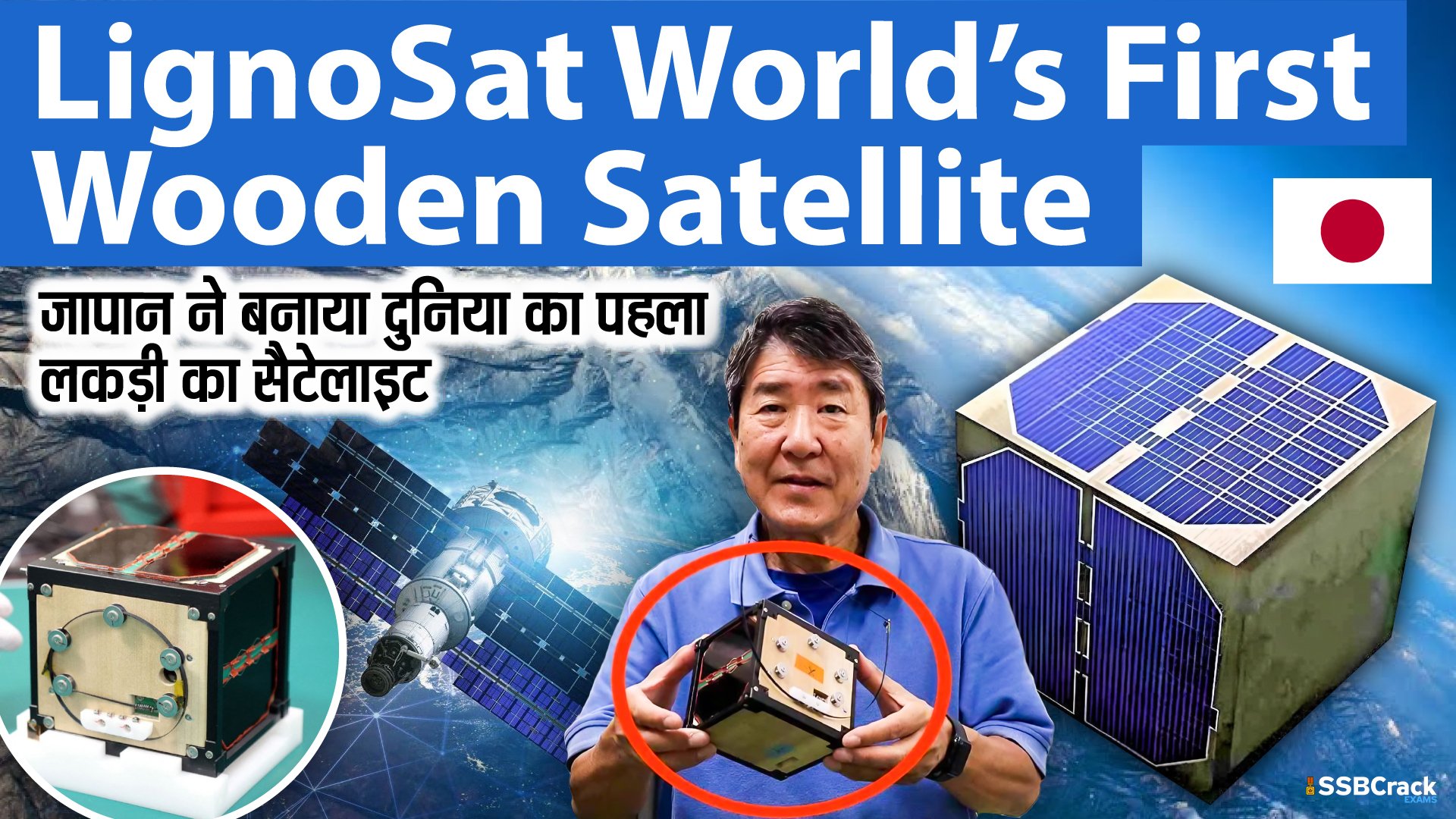The world’s first wooden satellite, LignoSat, was launched by Japanese scientists on Tuesday to understand the feasibility of timber in space. Kyoto University and homebuilder Sumitomo Forestry jointly developed the wooden satellite, LignoSat, and sent it to the International Space Station (ISS) on a SpaceX mission. The satellite will be positioned approximately 400 kilometres above Earth.
LignoSat World’s First Wooden Satellite
Why In News
- The world’s first wooden satellite, LignoSat, was launched by Japanese scientists on Tuesday to understand the feasibility of timber in space. Kyoto University and homebuilder Sumitomo Forestry jointly developed the wooden satellite, LignoSat, and sent it to the International Space Station (ISS) on a SpaceX mission. The satellite will be positioned approximately 400 kilometres above Earth.
About LignoSat
- The mini-satellite was launched to test the viability of a renewable material in future space habitation and exploration. An astronaut and professor from Kyoto University, Takao Doi, envisions timber as a sustainable resource supporting long-term human settlement in space. While explaining the sustainability of timber in space, Doi said, “With timber, a material we can produce ourselves, we can build houses, live, and work in space indefinitely.”
- LignoSat”, a fusion of “ligno” (the Latin word for wood) and “satellite”.
- It is developed through collaborative research and development by a team comprising members from Kyoto University and Sumitomo Forestry Co.
- LignoSat is inspired by wooden aircraft. The team of scientists crafted LignoSat from honoki wood, inspired by early wooden aircraft.
- The wood used is a Japanese magnolia species traditionally used for sword sheaths. The decision came after the 10-month ISS study confirming the Honoki’s resilience in space. The wooden aircraft are made without screws or glue reflecting traditional craftsmanship.
- The Doi’s team is planning for an ambitious 50-year strategy to send timber structures on the moon and mars. The spacecraft is developed with Nasa-certified wooden satellite validating wood as a space-suited material.
- Space temp changes drastically : The spacecraft will revolve around Earth for six months and it will measure how well the wood withstands the harsh space environment. The temperatures in the space change dramatically between –100 degrees and 100 degrees Celsius testing the durability of wood in extreme conditions.
- During its tenure in space, the wood’s ability to protect semiconductor components from cosmic radiation will also be analysed helping future data centre designs for space.
- The metal satellites leave aluminium oxide during re-entry, while this is not the case with wooden satellites which produce minimal pollution and result in a low environmental footprint. According to Doi, the success of wooden alternatives might result “in the ban of metal satellites” in future.
- The team is likely to promote wooden satellites to companies such as SpaceX if LignoSat performs as expected. The satellite might be revolutionising space exploration with eco-friendly materials. As per Kenji Kariya of Sumitomo Forestry, the timber industry will also benefit from the latest innovation.
- Material And Measure Of LignoSat Satellite : LignoSat is a 4 inches cube-sized satellite that weighs around 2 pounds, prepared with japanese techniques. According to the Japan Times, Magnolia wood was used as it has the strength and workability after space exposure tests that were conducted on cherry, birch and magnolia wood chips.
- The wooden satellites are less harmful to the environment post-decommissioning. Takao Doi said, “With timber, a material we can produce by ourselves, we will be able to build houses, live and work in space forever”.
























